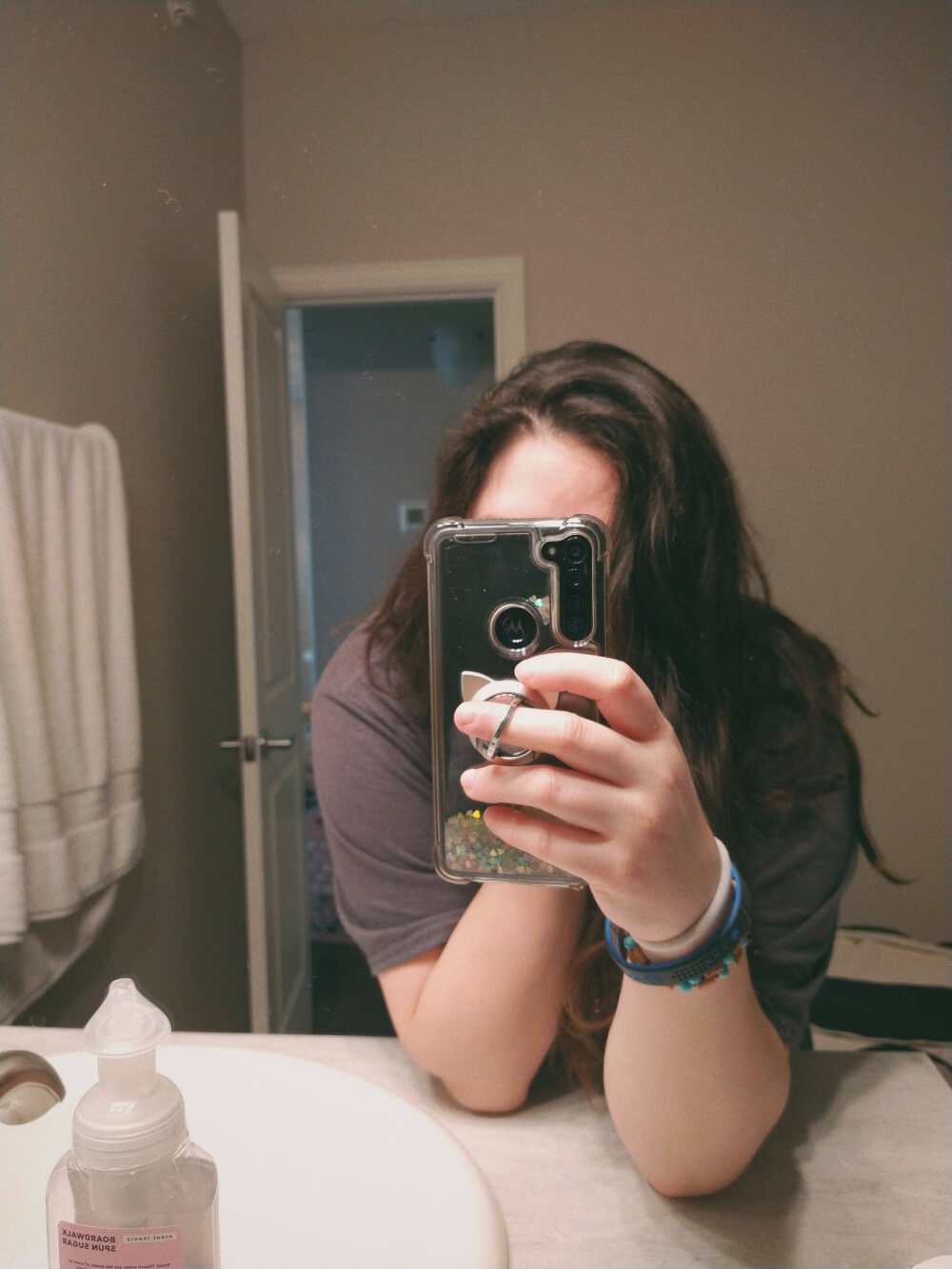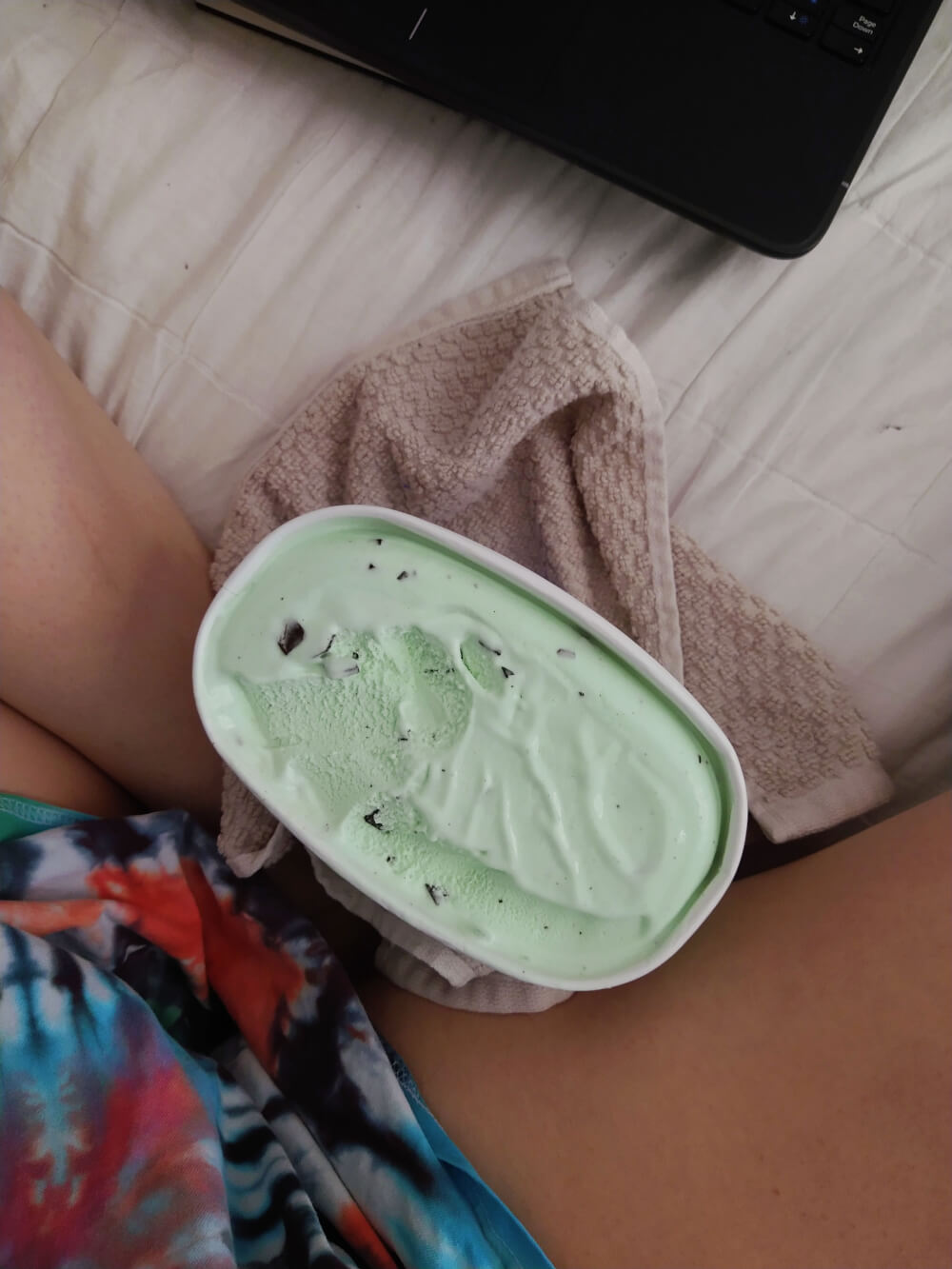Minnie Maud, also known as the homeodynamic recovery method (HDRM), is a do-it-yourself approach to eating disorder (ED) recovery.
I attempted to recover from my eating disorder on my own, because eating disorder recovery is expensive. I wound up in the hospital because my body couldn’t handle the sudden amount of food. 🤢
I didn’t think I was that sick, so I didn’t think I’d need any kind of medical intervention.

1. Heavy focus on calories
Minnie Maud is an outpatient eating disorder treatment program, with minimum caloric intake guidelines. These caloric guidelines are based on the US Dietary Guidelines, which have since been deemed problematic by anti-diet culture.
I haven’t the emotional capacity to explain the nuance, especially since I don’t want diet culture ads clouding my internet habits from all the searching.
My own caloric needs & struggles
My body needs 3000cal/day as a bare minimum to function properly. However, this number came from my experience working with a dietician who found my body behaved most sustainably at 3000cal/day — based on medical things, like checking my labs. 💁♀️
In anorexia remission, I’m capable of eating 3000-4500cal/day without undereating.
My body just needs that much…even if I had it at present. 🤷♀️ 3000+ is what it takes for my menstrual cycle to return and to stick, so anything beneath that number is considered undereating.
Minnie Maud encourages eating as high as 10,000 calories if you’re that hungry. I struggle to even hit 1500 calories most days, sustainably — even if I’m hungry.
I practice intuitive eating, which means eating when I’m hungry…though I also set alarms to eat every couple of hours even when I’m not hungry. 🥴
Firing a psychiatrist
I believe doctors I allow to treat me are on the team that is keeping me alive and well. I treat them as such. They’re not above me just because they’re a doctor.
The autistic part of me couldn’t care less for hierarchy. 🙄
I fired my first psychiatrist because
- He was sooo focused on me NOT gaining weight in recovery
- He encouraged me to exercise, even when I told him that my muscles and body ached even more from the movement
- He made food rules, i.e. telling me not to eat more than 2000cal per day
In other words, he was not working towards keeping me alive and well — he was enabling my eating disorder.
I switched to someone else who listened to me and actually understood.
A few years after, I hired a dietician to create meal plans for me based on what I could eat.
Calories are the LAST thing anorexics in recovery should be focusing on.
2. Minnie Maud makes refeeding fun
The refeeding process of eating disorder recovery is when you start eating again or start eating enough. “Eating enough” is quite subjective, as all bodies are different.
The homeodynamic recovery method encourages patients to eat what they want. Ergo, people utilizing Minnie Maud to the fullest get to eat whatever they want.

Eating pints of ice cream has been THE most helpful atypical anorexia recovery hack I’ve ever seen — and ice cream is my go-to when I can’t be bothered to eat solids.
Like, I actually did get a lot of decent advice for the refeeding process from Minnie Maud that I don’t know I would have gotten through medical professionals.
Many Minnie Maud refeeding tips regarding the foods to eat are accessible to me as an autistic person with sensory sensitivities.
Instead of punishing me for not being able to handle the textures of meat a lot of the time, Minnie Maud says, “Go forth and eat what works for you.”
In 2020, I ate a lot of Halo Top because the calorie counts were on the package, and it was “easy” for me because ice cream is more liquid. I know this brand is associated with dieting; I perceived it differently and loved it for a different reason.
3. You have to WANT to recover to use HDRM
Minnie Maud is not for eating disorder patients who don’t want to recover. It’s not for patients with higher support needs.
This isn’t to say it’s a good program, because it’s not perfect. Rather, a huge part of recovering from eating disorders in outpatient programs is that you have to WANT IT.
Inpatient programs are typically reserved for patients who don’t want to recover, aren’t ready to admit they need help, and/or have higher support needs (like needing 24/7 monitoring so you don’t relapse).
Still, any chance at remission highly depends on your wanting to recover.
4. Minnie Maud doesn’t make you face your fear foods
Fear foods are foods you avoid due to calorie count, fat intake, or some other lie your eating disorder told you.
When you’re autistic and anorexic, foods you avoid due to sensory sensitivities are often ignored by professionals who think your eating disorder-ridden self is just being manipulative. 😢
Foods I avoided because I was scared of gaining weight were ice cream, pizza, butter, cream cheese, various desserts, and whipped cream.
Ice cream and pizza, I fell into fast because
- “Pizza has all the food groups”, my psychiatrist said (and even my dietician)
- Ice cream = liquid = easier to digest during the early days of the refeeding process
Living with Charlise, I ate a lot of cream cheese without even knowing it. 🥴 Butter took me some time, even though I was fine having foods with butter.
My main butter qualms were/are buttered toast with(out) jam. I hope that I’ll be able to truly enjoy this treat again one day; for now, my brain finds it repulsive except during extreme hunger. 🙈
5. Some parts of Minnie Maud is actually helpful
Minnie Maud threw me into intuitive eating. It also helped me understand what to expect in recovery.
I don’t think the program is bad. Quite the opposite — I appreciate that someone took the time to publish a resource on the internet that can, and has, helped so many people.
I think a lot of people go into Minnie Maud hoping it will 💯 cure their eating disorder. However, there is no cure to eating disorders, — only remission, where you eat food freely and without any rules.
6. Minnie Maud makes eating disorder treatment accessible
Minnie Maud provides a decent guide for recovery to those who cannot afford official medical treatment. What too few everyday people understand is that eating disorders are both mental and physical illnesses.
“Just seeking therapy” isn’t going to resolve it. In my experience, therapy made my recovery worse because talking and thinking about food made me want food less.
It also didn’t result in me eating. Beyond that, I did actually need medical assistance when I first began recovery because I was so malnourished.
However, I didn’t always have insurance or the ability to pay for my medical expenses. Minnie Maud filled the gaps when I needed a program between medical intervention.
Because…
7. Minnie Maud draws from legitimate ED treatment methods
Critics of Minnie Maud and the homeodynamic recovery method say its creator, Gwenyth Olwyn, draws from pseudoscience.
Yet, many people with eating disorders who want to recover but don’t have the $40,000+ to shell out for a 30-day official program — or the insurance to help fund it — have claimed they found recovery success by utilizing the HDRM.
I presume this is the case because Minnie Maud isn’t 💯 false.
Few eating disorder treatment protocols in practice today qualify as evidence-based, likely because doctors don’t know enough about eating disorders.
I think most people think of anorexia nervosa when they think of anorexia or eating disorders, even though atypical anorexia nervosa is more common. Many people are baffled to find that my recovery didn’t consist of feeding tubes, and I even thought I wasn’t “sick enough” because I didn’t need them.
No exercise
The biggest thing in anorexia is movement. Being autistic, I stim, which doesn’t help matters. I find my body automatically stims even more when it’s starving, though — an attempt to self-regulate despite unfulfilled needs.
I’ve seen critics discount Minnie Maud because there’s no exercise. Even my family criticized literal doctor’s orders for me not to exercise during my own recovery.
It’s like…this concept of not exercising is perceived as becoming “never exercise again”.
I think people who don’t understand how exercising
- enables eating disorders or
- can easily undo all attempts at recovering from anorexia.
8. Intuitive eating is better, though not perfect
For me, Minnie Maud was the only constant in my eating disorder recovery — but I didn’t follow it 💯.
I hopped from Minnie Maud onto Tabitha Farrar’s blog, and then I began working with a dietician. Tabitha’s posts were more direct — something I needed, from someone who knew what it was like, before I even knew I needed it.
Intuitive eating happened eventually, kind of on its own.
My biggest struggle is not knowing when I am hungry or need food, because I’m autistic and struggle with interoception. Interoception is the sense that gives you the ability to identify your feelings and other senses.
I kid you not, I didn’t realize I was experiencing anaphylaxis until two hours later, when I couldn’t swallow water. I had a rash all over my upper chest and shoulders.
So full-on intuitive eating doesn’t work for me.
I think intuitive eating is better than Minnie Maud, but it’s not the perfect solution.
Intuitive eating means listening to your hunger cues, which I don’t have that well. Instead, I set alarms for when I must eat and allow myself to eat between those times as well.
I didn’t have supportive family during my early ED recovery days. Even now, I only have one relative who is adamant about me recovering from atypical anorexia. 👀
If I had had to rely on my family to help me recover, I would have died by now. My family is all about
- yo-yo dieting,
- trying out the latest fad and
- giving food morals.
Worse, they believed I needed to eat less.
“You’re in this situation in the first place because you eat too much junk.” ~ a relative
That was when I realized they only saw what they wanted to see and based their perception of me on their own faults.
DIY eating disorder recovery didn’t work for me then.
It works for me now somewhat, when I relapse, because I do actually want to recover and know well enough what I need to do in order to do so.
What are your thoughts on Minnie Maud?
Love this post?
Support me by subscribing to my blog and/or buying me a cuppa:
Leave a comment